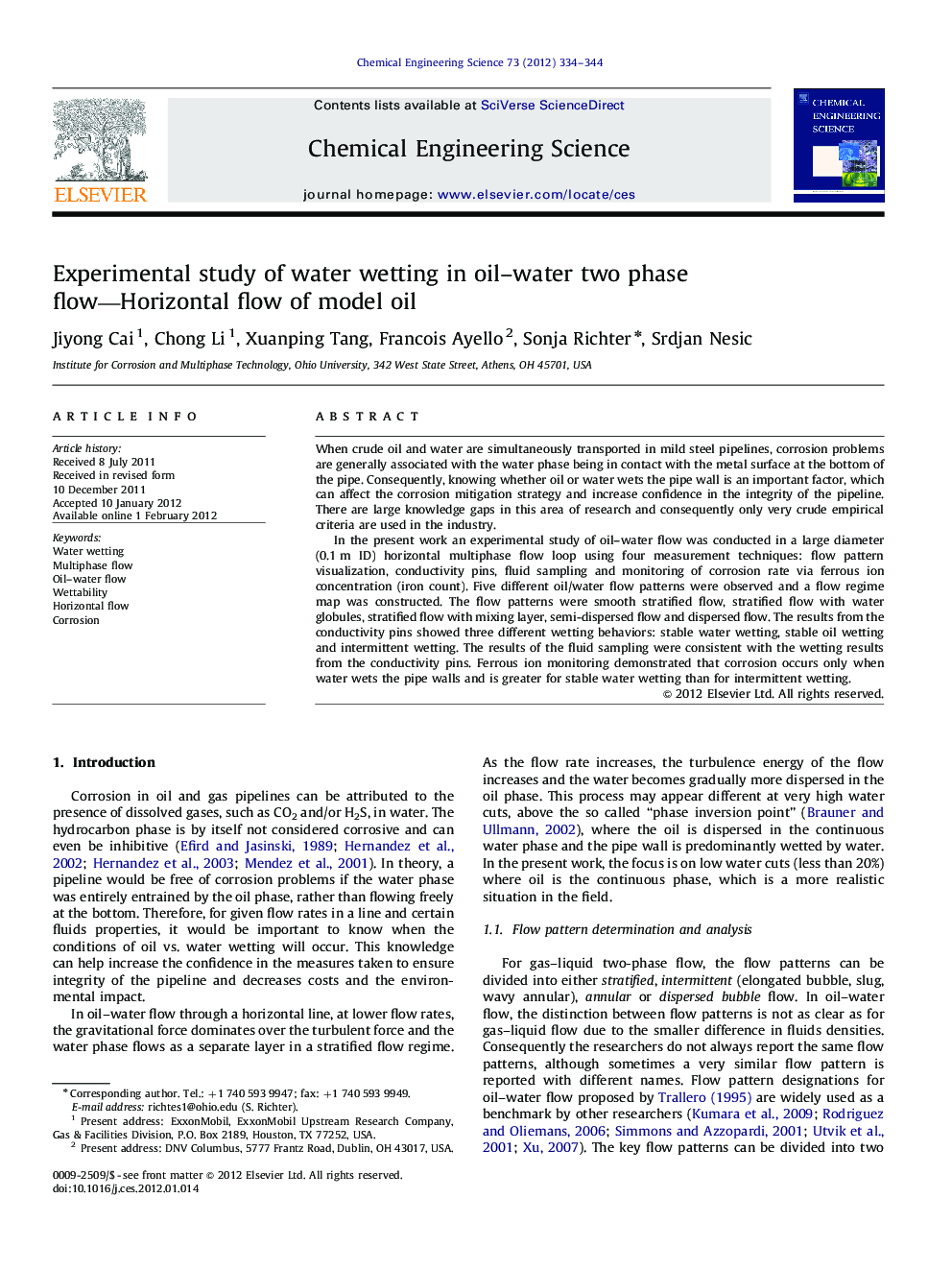| Article ID | Journal | Published Year | Pages | File Type |
|---|---|---|---|---|
| 155866 | Chemical Engineering Science | 2012 | 11 Pages |
When crude oil and water are simultaneously transported in mild steel pipelines, corrosion problems are generally associated with the water phase being in contact with the metal surface at the bottom of the pipe. Consequently, knowing whether oil or water wets the pipe wall is an important factor, which can affect the corrosion mitigation strategy and increase confidence in the integrity of the pipeline. There are large knowledge gaps in this area of research and consequently only very crude empirical criteria are used in the industry.In the present work an experimental study of oil–water flow was conducted in a large diameter (0.1 m ID) horizontal multiphase flow loop using four measurement techniques: flow pattern visualization, conductivity pins, fluid sampling and monitoring of corrosion rate via ferrous ion concentration (iron count). Five different oil/water flow patterns were observed and a flow regime map was constructed. The flow patterns were smooth stratified flow, stratified flow with water globules, stratified flow with mixing layer, semi-dispersed flow and dispersed flow. The results from the conductivity pins showed three different wetting behaviors: stable water wetting, stable oil wetting and intermittent wetting. The results of the fluid sampling were consistent with the wetting results from the conductivity pins. Ferrous ion monitoring demonstrated that corrosion occurs only when water wets the pipe walls and is greater for stable water wetting than for intermittent wetting.
► Three wetting regimes were identified: oil, water and intermittent. ► Wall conductance probe reliably assesses surface wetting. ► When oil wetting occurs, no corrosion is measured. ► Water entrainment model successfully predicts surface wetting. ► Surface wetting is closely related to the flow pattern.
